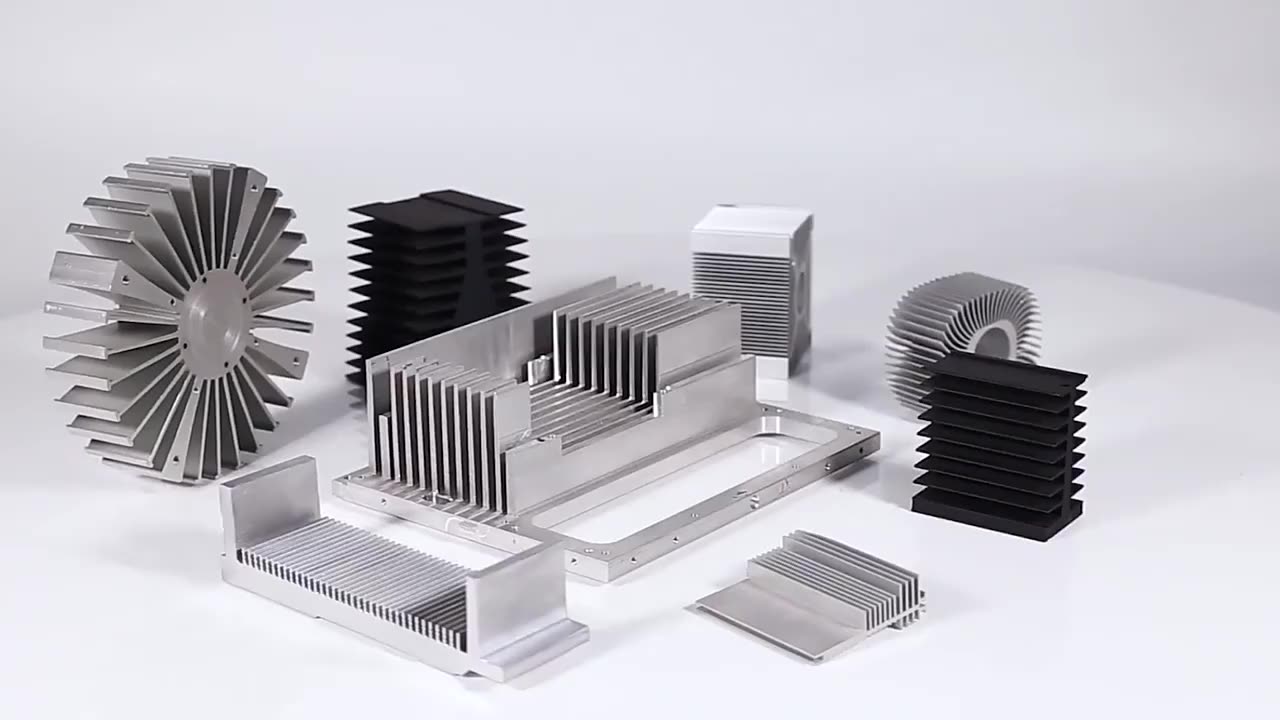Aluminium heatsink extrusion is a widely adopted manufacturing process for producing high-performance cooling solutions used in various applications such as LED lights, electronic devices, and industrial machinery. This method creates heat sink profiles that offer excellent thermal performance and cost-effective solutions for managing heat dissipation.
The extrusion process involves forcing heated aluminium alloys through a specially designed extrusion die to create continuous profiles with a defined cross-section. These extrusion profiles are customized to meet specific application requirements, ensuring good thermal conductivity and effective air cooling.

The process starts with selecting suitable aluminium alloys that offer optimal thermal conductivity and mechanical properties. Common alloys such as 6061, 6063, and 1050 are preferred for their excellent heat dissipation capabilities.
The aluminium billet is heated to a specific temperature (typically between 400°C and 500°C) to ensure the metal is malleable enough for the extrusion process. Proper heating is crucial for achieving a high-quality finish and maintaining the structural integrity of the heatsink profiles.
An extrusion die is carefully designed to shape the aluminium into the desired heat sink extrusion profile. Dies are crafted to create various configurations, such as large heatsinks, fin heat sinks, or round aluminum heatsinks, depending on the product's cooling requirements.
The heated billet is placed inside the extrusion press, where a powerful ram forces the aluminium through the die opening. As the aluminium emerges from the die, it takes the desired shape of the heat sink extrusion profile. This stage ensures the aluminium maintains good thermal performance characteristics.
The freshly extruded aluminium heatsink is immediately cooled using air cooling or water quenching methods to solidify the shape and enhance thermal conductivity. Controlled cooling helps improve the product's structural stability and mechanical strength.
The extruded aluminium heatsink is cut to the desired lengths to suit various application requirements. Surface treatments such as anodizing or powder coating may be applied to enhance corrosion resistance and improve aesthetics. These treatments also ensure a durable, high-quality finish.
To guarantee performance, the finished heat sink profiles undergo rigorous testing for dimensional accuracy, thermal conductivity, and overall quality. High-performance aluminium heatsinks are essential for efficient heat dissipation in demanding applications.
Extruded aluminium heatsinks are widely used in:
Aluminium heatsink extrusion is a versatile and efficient manufacturing method for producing high-performance cooling solutions. By leveraging a wide variety of aluminium alloys, extrusion dies, and cooling techniques, manufacturers can create durable, cost-effective heat sink profiles that meet specific application requirements. Whether you're looking for round aluminum heatsinks, large heatsinks, or fin heat sinks, the extrusion process ensures optimal thermal performance and reliability.